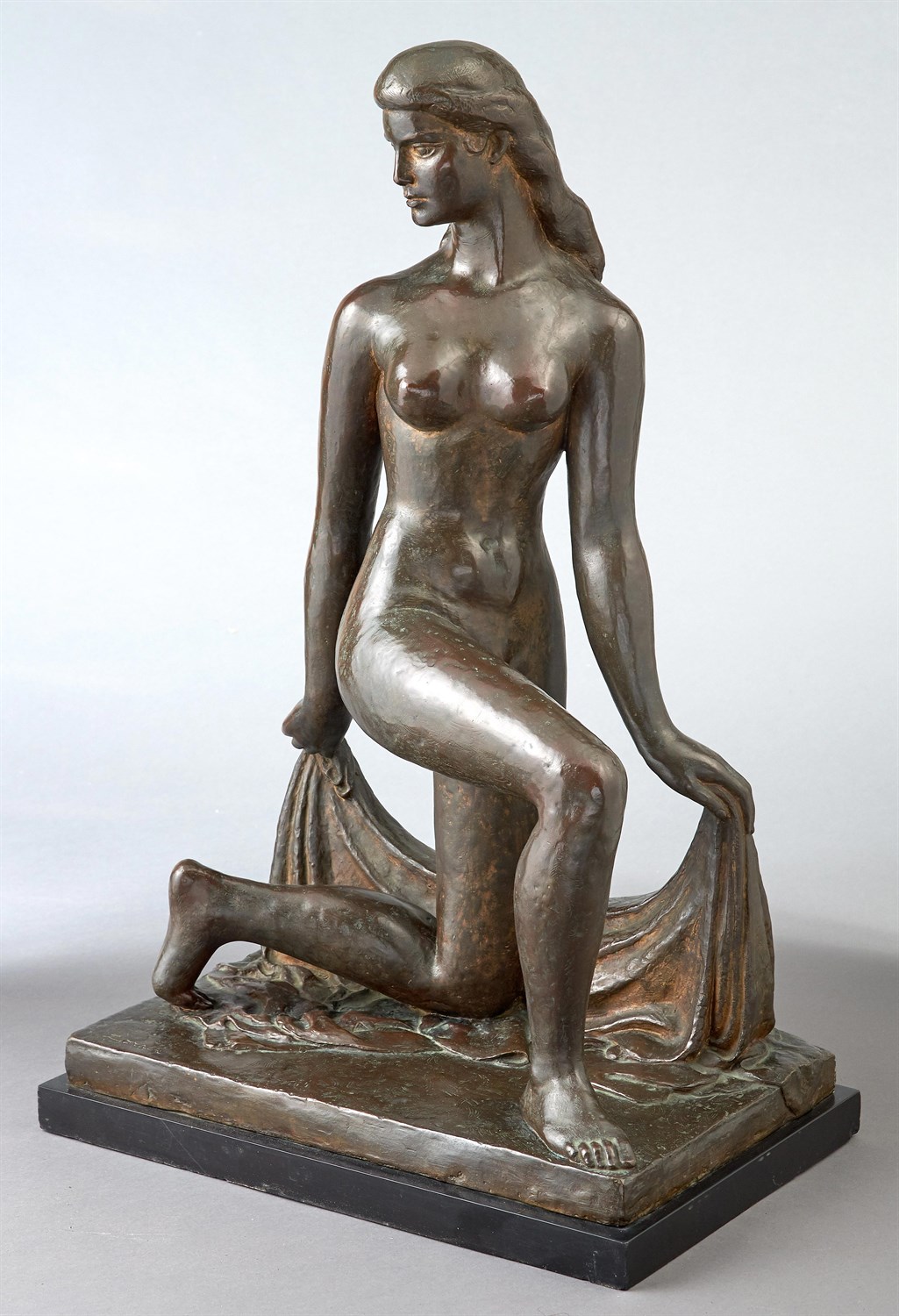
William Zorach
American, 1889-1966
William Zorach was a Lithuanian-born American sculptor, painter, printmaker, and writer who played a formative role in the development of American modernism. Emigrating to Cleveland as a child, he later studied art in New York, and Paris, where he absorbed the influences of Fauvism and Cubism. Though he began his career as a painter, Zorach turned to sculpture in the early 1920s, becoming a pioneer of direct carving in the United States.
His mature work is marked by simplified, monumental forms that convey warmth and intimacy, often depicting family, domestic life, and the human figure. Mother and Child (1927–30), one of his most recognized works, reflects his focus on simplified form and close human relationships through a compact composition. Zorach often worked in wood and stone, valuing the physical presence and directness of carved materials. He also collaborated with his wife, the artist Marguerite Zorach, forming one of the most influential creative partnerships in early 20th-century American art.
Zorach received major commissions throughout his career and taught at the Art Students League in New York, mentoring a generation of sculptors. His work is represented in leading public collections across the country and continues to be recognized for its blend of modernist form and timeless human themes.





